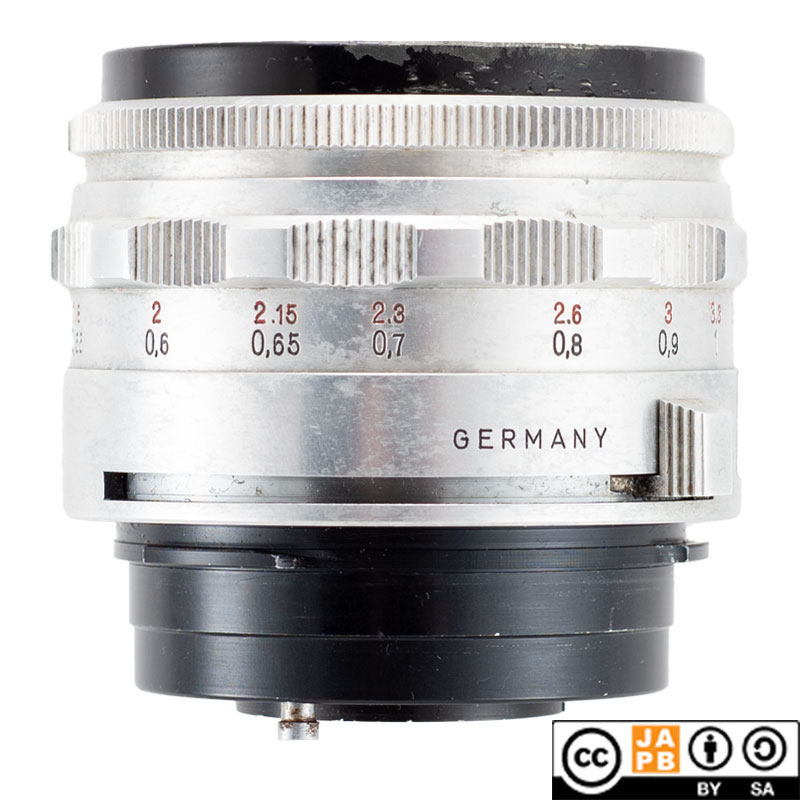Semi-automatic in terms of apertures typically meant that the aperture needed to be ‘cocked’ (primed) before the camera would be able to trigger the stop-down mechanism when pressing the shutter button.
The typical aperture actuation process in a semi-automatic lens would be:
1. Photographer is focusing and framing. Aperture is fully open.
2. Photographer presses the shutter button. Body triggers aperture stop-down (to pre-selected value). Aperture stays in stopped-down position.
3. Photographer opens aperture and tensions close-down mechanism (in some camera systems this would happen using a lever on the lens; in other camera systems actuating the film advance lever would also cock the semi-automatic lens)

Semi-automatic apertures were an interlude in moving from manual and preset apertures (pre-1950s) to fully automatic apertures (1950s onward) and not all lens systems had this interlude. Some manufacturers (some examples: Asahi/Pentax, Canon, Carl Zeiss Jena, Topcon) started implementing semi-automatic apertures in their lenses while other manufacturers made the jump directly to fully automatic apertures. Semi-automatic lenses are a classic case of first-mover disadvantage.
« Back to Glossary Index